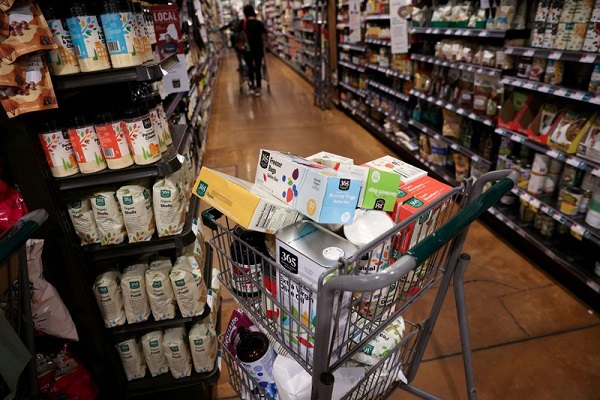By Geoffrey Smith
Investing.com -- U.S. inflation turned out stronger than expected yet again in August, paving the way for another big hike in interest rates from the Federal Reserve when its policy-makers meet next week.
The consumer price index rose 0.1% in August, and was up 8.3% from a year earlier, the Bureau of Labor Statistics said on Tuesday. Analysts had expected prices to fall by 0.1% thanks to the steady decline in gasoline prices from their summer peak.
However, that factor was overwhelmed by big increases in the less volatile elements of consumer spending. The so-called 'core CPI' rose a thumping 0.6%, twice what was expected, driving the annual core inflation rate up to 6.3% from 5.9% in July. That's the highest it's been since the 40-year high that it hit in March.
"This is a much much worse CPI report than anyone was expecting," tweeted Justin Wolfers, a professor of economics at the University of Michigan. "The decrease in headline inflation due to lower energy prices is there, but the underlying rate -- best proxied by core inflation -- is running a fair bit higher than anyone forecast and most of us hoped."
Gasoline prices fell 10.6% during the month but that was partly neutralized by a rise in natural gas and electricity prices, indirectly driven by the energy crisis in Europe due to Russia's war in Ukraine. The effect of cheaper energy was then completely overwhelmed by rises in the prices for housing and medical care, which rose 0.7% and 0.8%, respectively.
While the current surge in inflation may have been first seen in energy prices, it has now become increasingly entrenched in other areas of spending. Only two sectors - recreation and education - are now showing annual inflation rates of less than 5%, according to ADM ISI strategist Marc Ostwald.
The dollar instantly gained more than a cent against the euro on the news, as market participants moved to price in another rate hike of 75 basis points from next week's Fed meeting. The same calculation sent stock futures into reverse, leaving Dow Jones futures down 1.8%, S&P 500 futures down 2.3%, and Nasdaq 100 futures down 2.9%. All three had posted solid gains on Monday and had been on course to extend those gains before the release.
Crude Oil Futures, which had risen in the last couple of days as the dollar weakened, also went sharply into reverse, falling by over $1/barrel to be down 0.7% on the day, while Gold Futures fell 1.5% to hit their lowest in a week.
Both oil and gold tend to react negatively to rising interest rates, a trend that seems set to continue when the Fed's Federal Open Markets Committee meets again in a week's time.
"Markets are likely to fret about a 100 basis point hike at next week's meeting," Ostwald wrote in a note to clients. He noted that market participants "have again been guilty of going down the long-time habitual route of blithe positivism and are again been derailed by reality."
